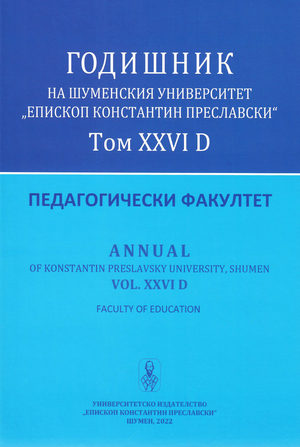Билингвизъм и езикови контакти. Типология на билингвизма. Билингвизъм и детска възраст
Bilingualism and Language Contacts. Typology of Bilingualism. Bilingualism and Childhood
Author(s): Ayshe N. Rasimova, Gergana S. Nikolova, Emel S. Ibryamova, Radoslava V. NenovaSubject(s): Social Sciences, Language studies, Language and Literature Studies, Education, Vocational Education
Published by: Шуменски университет »Епископ Константин Преславски«
Keywords: language; idiolect; bilingualism; children; proficiency; bilingual; teacher; skill; habit; speech
Summary/Abstract: By developing of hearing the unborn baby subconsciously memorizes the rhythm and melody of the language, which is called " mother language". The existance of two different languages in an individual's idiolect is defined as bilingualism. In any bilingualism, whatever it is natural or artificial, there is a first (native) language and a second (foreign) language, which usually differ in degree of proficiency. Working with bilingual children or students, it is a primary task of the teacher to enhance their motivation and to help them to overcome the difficulties that arise from the habits acquired from their mother tongue. Bilingualism is considered as a mental mechanism of knowledge, skills and habits, allowing a person to create and deliver speech units belonging to two different language systems.
Journal: Годишник на Шуменския университет „Епископ Константин Преславски“. Педагогически факултет
- Issue Year: XXVI/2022
- Issue No: 1
- Page Range: 18-33
- Page Count: 16
- Language: Bulgarian

